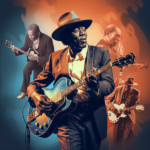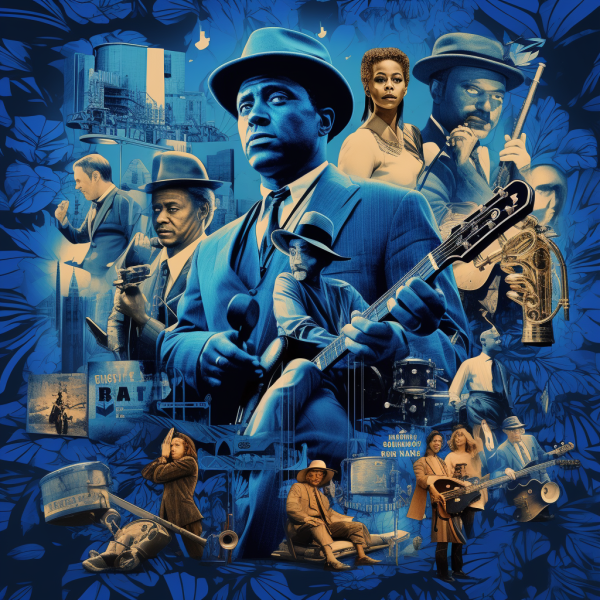1. “Cadillac Records” (2008)

“Cadillac Records” is a captivating biographical drama that takes us on a journey through the tumultuous history of Chess Records, a pivotal label in the rise of blues music. Directed by Darnell Martin, the film brilliantly captures the essence of the era and the remarkable lives of blues legends who recorded there, including Muddy Waters, Howlin’ Wolf, and Etta James.
The movie explores the trials and tribulations of these musicians, shedding light on their personal struggles, artistic triumphs, and the racial challenges they faced during the 1950s and 1960s. Jeffrey Wright’s portrayal of Muddy Waters and Eamonn Walker’s Howlin’ Wolf are nothing short of extraordinary, breathing life into these iconic artists.
“Cadillac Records” not only delves into the musicians’ careers but also offers a glimpse into their complex interpersonal relationships, notably the rocky romance between Leonard Chess (Adrien Brody), the label’s founder, and Etta James (Beyoncé Knowles).
The film’s soundtrack is a treasure trove of blues classics, performed by the talented cast. It authentically recreates the music that defined an era, making it a must-see for both blues aficionados and those looking to explore the genre’s rich history.
2. “Ray” (2004)
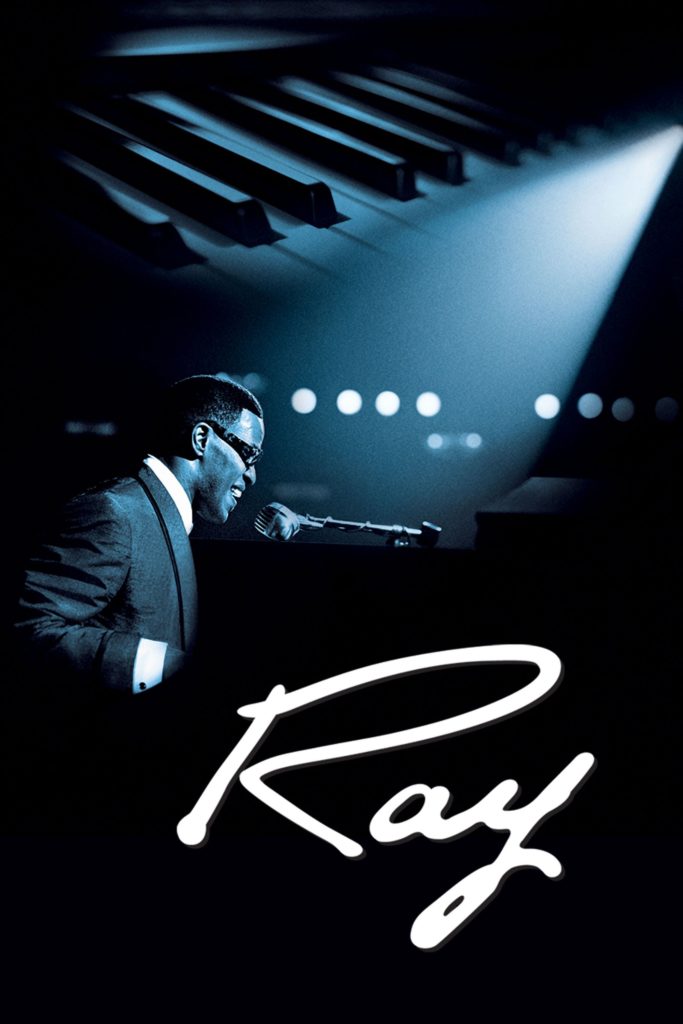
“Ray,” directed by Taylor Hackford, is a biographical drama that primarily focuses on the life and career of legendary musician Ray Charles. While Ray Charles is renowned for his contributions to various music genres, including jazz and soul, the film also explores his deep roots in the blues.
Jamie Foxx’s portrayal of Ray Charles is nothing short of transformative and earned him the Academy Award for Best Actor. The film chronicles Charles’s journey from his early struggles and vision impairment to his rise to fame as a pioneering artist.
While the movie’s main focus is on Ray Charles’s musical genius and personal challenges, it subtly highlights the influence of blues in his groundbreaking sound. Charles’s fusion of gospel, blues, and R&B played a pivotal role in shaping American music.
“Ray” not only provides insight into the artist’s life but also showcases his enduring love for blues music. It’s a compelling portrait of a musical legend and a testament to the blues’ profound impact on his work.
3. “The Blues Brothers” (1980)

“The Blues Brothers,” directed by John Landis, is an iconic comedy-musical film that follows the misadventures of Jake (John Belushi) and Elwood Blues (Dan Aykroyd). The film combines elements of comedy, action, and music, making it a beloved classic.
The story revolves around Jake and Elwood Blues, two brothers on a mission to save the Catholic orphanage where they were raised. To do so, they must reunite their band and raise money by putting on a series of concerts.
What sets this film apart is its exceptional musical performances featuring legendary blues and R&B artists. From James Brown’s electrifying rendition of “The Old Landmark” to Aretha Franklin’s soulful performance of “Think,” the movie is a showcase of musical talent.
While “The Blues Brothers” is known for its humor and outrageous stunts, it also pays homage to the blues and its cultural significance. It celebrates the music that has touched the hearts of generations, making it a timeless classic that continues to entertain and inspire.
4. “Honeydripper” (2007)
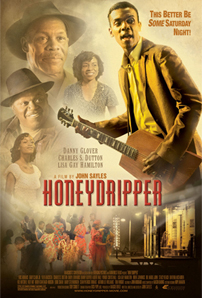
“Honeydripper,” directed by John Sayles, is a period drama set in the 1950s that explores the world of juke joints and the transformative power of blues music. The film boasts an impressive cast that includes Danny Glover, Charles S. Dutton, LisaGay Hamilton, and notable blues musician Gary Clark Jr.
The movie revolves around Tyrone “Pine Top” Purvis (played by Danny Glover), the owner of a struggling juke joint called the “Honeydripper Lounge.” Facing financial ruin, Tyrone hatches a plan to revive his business by bringing in a legendary blues guitarist, Guitar Sam, portrayed by none other than the incredibly talented Gary Clark Jr.
What makes “Honeydripper” stand out is its authentic portrayal of the music scene in the segregated South. It vividly captures the atmosphere of juke joints, where people came together to dance, socialize, and find solace in the blues. With Gary Clark Jr.’s involvement, the film’s soundtrack is elevated to another level of authenticity and soulfulness.
The movie explores themes of racial tensions, economic hardship, and the role of music in bringing communities together. The electrifying blues performances, including those by Gary Clark Jr. as Guitar Sam, serve as the film’s emotional core.
“Honeydripper” is a heartfelt tribute to the blues and its ability to transcend adversity. It reminds us of the enduring power of music to uplift spirits and bridge divides, making it a must-watch for blues enthusiasts and lovers of American history.
5. “Crossroads” (1986)

“Crossroads,” directed by Walter Hill, is a blues-infused drama that blends music, mythology, and folklore in a captivating narrative. The film follows the journey of
Eugene Martone (played by Ralph Macchio), a young guitar prodigy with a passion for blues music.
Eugene is determined to learn the hidden secrets of blues guitar from Willie Brown (played by Joe Seneca), a legendary musician who sold his soul to the devil at a crossroads in exchange for musical prowess. Their quest takes them to the Mississippi Delta, where they seek to find the lost songs of the enigmatic bluesman Robert Johnson.
The film’s title, “Crossroads,” is a reference to the mythical location where, according to legend, blues musicians made their Faustian deals. This motif adds a layer of mystique to the story, creating an intriguing blend of music and folklore.
What sets “Crossroads” apart is its homage to the blues and its exploration of the genre’s mythical roots. The movie’s climax features an electrifying guitar duel that pays tribute to the blues’ rich tradition of musicians pushing the boundaries of their craft.
“Crossroads” is a unique cinematic experience that celebrates the blues while delving into themes of ambition, friendship, and the pursuit of musical mastery.
6. “Black Snake Moan” (2006)
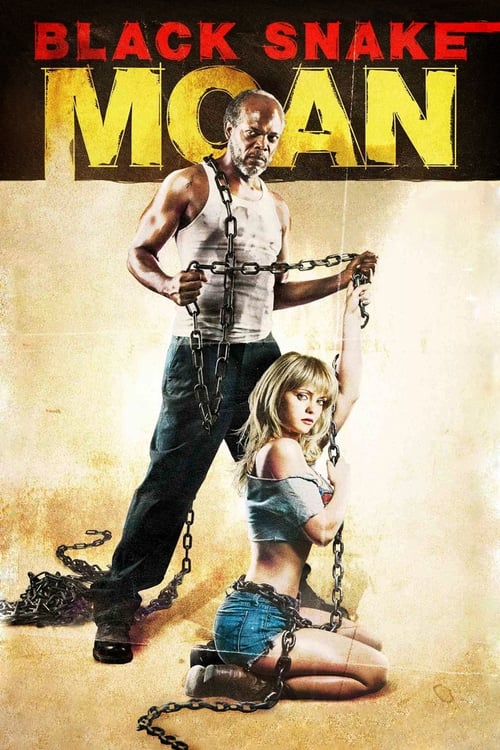
“Black Snake Moan,” directed by Craig Brewer, is a gritty drama that explores themes of redemption, healing, and the power of music. Set in the rural South, the film features a mesmerizing blues-infused soundtrack that weaves seamlessly into the storyline.
The movie centers around two damaged souls: Lazarus (played by Samuel L. Jackson), a former blues musician and farmer, and Rae (played by Christina Ricci), a troubled young woman. When Lazarus finds Rae severely beaten and left for dead on the side of the road, he takes her in and embarks on a mission to save her soul.
“Black Snake Moan” is deeply rooted in the blues, both thematically and musically. Lazarus’s homemade blues performances, with Samuel L. Jackson showcasing his musical talents, serve as a form of therapy and catharsis for the characters.
The film’s title is a reference to the classic blues song “Black Snake Moan,” and the music serves as a powerful backdrop to the characters’ emotional journeys. It’s a film that explores the raw, primal emotions often found in blues music and how it can be a source of healing and connection.
“Black Snake Moan” is a unique and thought-provoking exploration of the blues’ ability to mend broken spirits and bridge the gap between two disparate souls.
7. “Ma Rainey’s Black Bottom” (2020)

“Ma Rainey’s Black Bottom,” directed by George C. Wolfe, is a powerful adaptation of August Wilson’s play and a tribute to the “Mother of the Blues,” Ma Rainey (played by Viola Davis).
Set in 1927 Chicago, the film unfolds during a recording session in which Ma Rainey and her band attempt to capture the magic of her music. The story not only explores the challenges of the music industry but also the racial dynamics of the era.
While the film predominantly focuses on the recording session and the tensions within the band, it also provides glimpses into Ma Rainey’s life and her significance in the world of blues music. Viola Davis’s remarkable portrayal brings Ma Rainey’s larger-than-life persona to the screen.
The movie’s title track, “Black Bottom,” is a reflection of the era’s dance and music style, and it serves as a reminder of the blues’ cultural importance during the Harlem Renaissance.
“Ma Rainey’s Black Bottom” is a poignant exploration of the blues and the racial and artistic struggles faced by Black musicians in the early 20th century. It offers a window into a pivotal moment in music history.
8. “Last of the Mississippi Jukes” (2003)
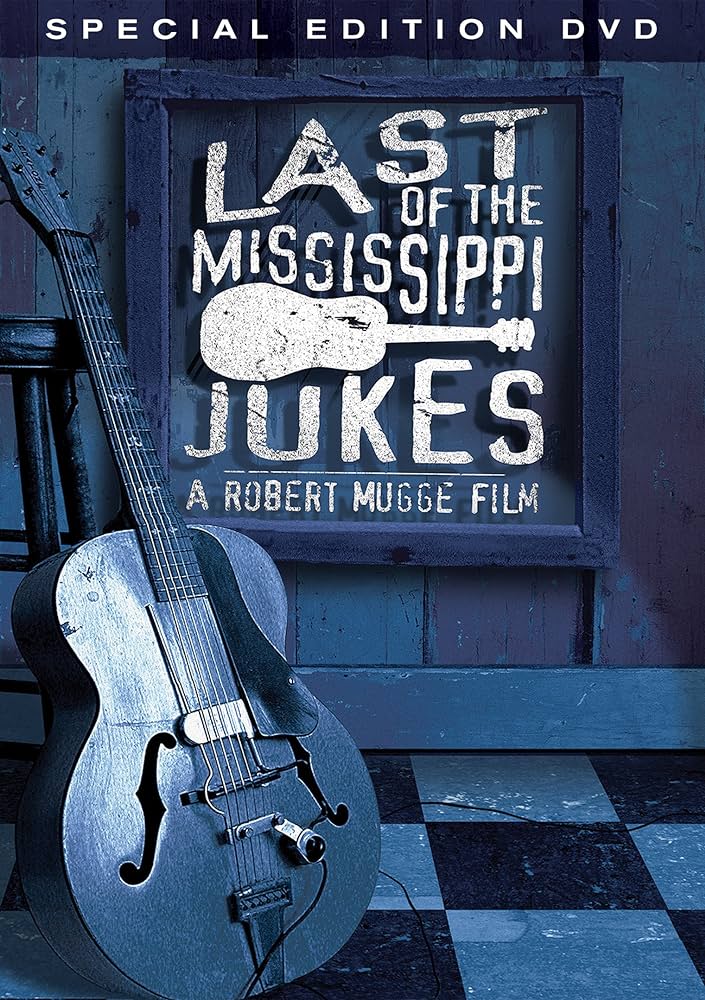
“Last of the Mississippi Jukes” is a documentary directed by Robert Mugge that celebrates the disappearing juke joint culture in the Mississippi Delta, a region deeply rooted in the blues.
The film takes viewers on a journey to the heart of the Delta, where juke joints were once vibrant hubs of live music, dancing, and community. It paints a vivid picture of the cultural significance of these intimate venues, which served as sanctuaries for blues musicians and their audiences.
Through interviews with local residents, musicians, and historians, “Last of the Mississippi Jukes” explores the history and legacy of juke joints. It highlights the role these establishments played in nurturing the blues and preserving its traditions.
The documentary captures the essence of the Delta blues and its enduring influence on American music. It’s a testament to the importance of preserving cultural heritage and the grassroots music that has touched generations.
“Last of the Mississippi Jukes” serves as a valuable record of a fading cultural phenomenon and a tribute to the blues’ enduring spirit.
9. “Lightning in a Bottle” (2004)
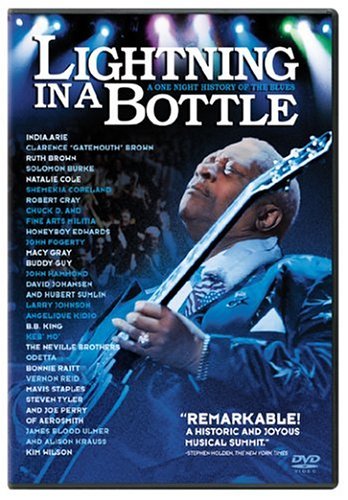
“Lightning in a Bottle,” directed by Antoine Fuqua, is a concert documentary that celebrates the blues in all its electrifying glory. The film captures a historic night of performances by legendary blues and rock artists at the Radio City Music Hall in New York City.
The concert, titled “Lightning in a Bottle: A Salute to the Blues,” was organized to pay tribute to the blues’ rich legacy. It featured an extraordinary lineup of musicians, including B.B. King, Buddy Guy, Bonnie Raitt, and many more.
What sets “Lightning in a Bottle” apart is its commitment to showcasing the diversity and evolution of the blues. The concert spans various styles within the genre, from Delta blues to Chicago blues, showcasing the breadth of talent and creativity in the blues community.
The film not only captures the exhilarating live performances but also provides historical context and interviews with the artists. It’s a celebration of the blues’ enduring appeal and its ability to resonate with audiences of all ages.
“Lightning in a Bottle” is a testament to the blues’ timeless relevance and its ability to bring people together through the power of music.
These nine movies based on blues music offer a diverse range of experiences, from biographical dramas to fictional tales set against the backdrop of the blues. Each film celebrates the genre’s rich history, its legendary figures, and the enduring power of blues music to move and inspire. Whether you’re a dedicated blues enthusiast or simply looking for a soulful cinematic experience, these films are sure to strike a chord and leave you with a deeper appreciation for the blues.







